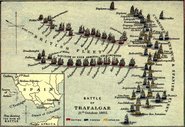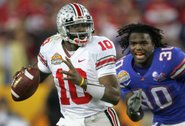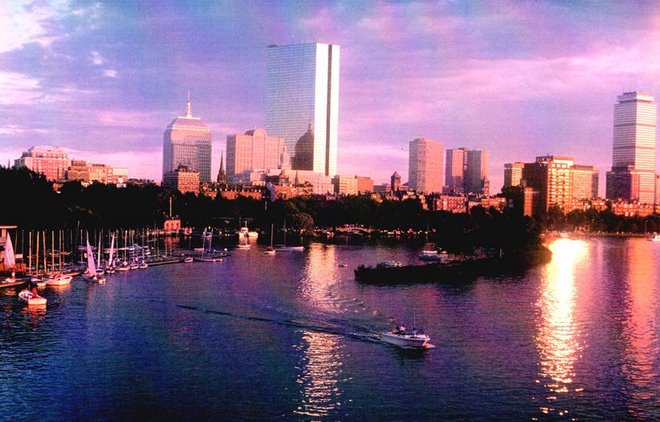The Aftermath of the Big Dig
It is true that Boston will soon experience the benefits of a wide swath of a plush new green space ribbon that cuts a swath down the center of the financial district and connects the North End with the downtown for the first time since the JFK expressway was elevated in the 1950s. It was not the first time that a decades-old elevated transportation system was torn down. The elevated rail service that ran over Atlantic Avenue from 1903 to 1937 cut the North End from the docks. Another elevated service cut Boston's downtown in two. Perhaps the Big Dig represents the transportation improvements for this half of the 21st century. Let’s hope not.
There are numerous examples of cities that could create relatively inexpensive light rail along EXISTING rail and automobile routes with little difficulty1. Boston has North America’s oldest existing subway line but hasn’t added a new rail line since the 1970s. Traffic keeps piling up on the highways and yet the existing T’s operations are too expensive. When do road improvements and repairs become too expensive? When does the waste of an hour during morning and evening commute become too costly? It is very clear that the existing infrastructure is over capacity. That is understated. The existing infrastructure is obsolete; even after the Big Dig.
England’s City
Boston’s streets are one of the few cities in America that do not follow a grid pattern. In the mode of an English Market town, Boston’s downtown streets form a patchwork of medieval streets that begin and end in one block. Traveling in the downtown posed no problem for those working and living within blocks of their destinations but for those going from one side to the other, there is no direct and quickest route. Subway routes alleviated some of this congestion. The 1950s elevated highway made Boston surpassable by Car.
Although the original plan never did take path, as I-95 was re-routed to travel along the existing Rt 128 “Scenic” Highway, and the I-695 inner-belt through Somerville, Cambridge and Brookline never got off the planning boards, the elevated highway that split the downtown gave commuters two options; venture into the downtown or completely around it.
Rt. 128
Today, all transit routes continue to go into the city as spokes on a wheel. This forces workers who work and live in opposite sides of the city to travel along Rt. 128. The Yankee Division Highway (named for the 26th Infantry Division which served in WWI and WWII) was built in the 1920s but was upgraded to handle traffic in subsequent years. In 1951, it became the first circumferential highway in the United States. In 1958, it was widened from 6 to 8 lanes. This influenced companies to take route on the highway route and business surged along 128. Unfortunately, traffic began to pile up from this added traffic and now the highway is over-capacity and clogged between the rush hours, especially near the major interchanges in the north and south of Boston.
While the Big Dig is already outdated and no substantial improvements are in sight for the existing highway network, (Try building an I-695 through Cambridge and Brookline now!) traffic can be alleviated on existing networks by improvements and enlargements of secondary routes. These secondary routes consist of limited access (and distance) highways, roads and rail.
The Future
Americans have always been ephemeral even when it comes to urban design. The concept of permanence, especially with regards to a city has only taken root in recent years. Years before the automobile, train tracks dotted across the Boston metro area, carrying people, goods and services to and from Boston with speed (relative to the day). When the power and appeal of the automobile crushed any alternative transportation choices, many cities destroyed existing rail lines and tore up plans for new track to spread concrete for the car. We are one of the lucky few cities in America that has track still existing and corridors that can be utilized to provide new secondary routes. There has been a suggestion(s) to eliminate roadways for pedestrian walkways, which will promote public transportation, but also create traffic nightmares. Pedestrian ways would benefit most after public transportation is upgraded.
While our public transit system should not be cherished for its inefficiencies, it should not be blamed for its inadequacy. Many people do not take the subway or commuter rail because it does not allow the passenger the freedom of destination as a car. One cannot get from points in Somerville or Malden without taking a train into Boston’s Park Street or Downtown Crossing stations before changing onto another train to go to Cambridge’s Harvard Square or Central Square stations. This is the case for every existing subway line. With the local exceptions of the Green line split in Kenmore Square (or Copley for the E line) and Red Line at UMASS-JFK, there is no link that unites all of the urban communities of Boston. This results in increased automobile traffic and unnecessary congestion in downtown stations. I have researched some different opportunities and have come up with the following plans.
The Urban Ring – 1st Strategy: Blue/Orange/Red/Green/Orange/Red
There is an easy and obvious solution. Unite the 1st tier communities (those adjacent to Boston) within the Rt 128 belt with two circumferential rapid transit/subway train service lines along existing and new service track that would connect East Boston and (in this order) Chelsea, Everett, Somerville, Cambridge and Allston with one line. Another line would start in Allston/Kenmore Square and utilize the existing Worcester-Boston commuter rail to connect Allston and Kenmore Square to the Prudential Center and then divert with a new tunnel underneath Massacusetts Avenue with underground stops at Tremont/Dartmouth Washington St./Franklin Square and New Market Square and ending at the existing Andrew Square Red Line. This would benefit communities traditionally thwarted by convenient public transportation, especially residents of Chelsea, Everett, Allston and the South End. With added transfer options, commuters from other outlying communities would be more enticed to park and ride to avoid the congestion on Rt. 128 and I-93/Rt. 3.
The Urban Ring – 2nd Strategy: The Parallel (I-95 Belt and Boston Metro)
Another strategy to reroute traffic along Rt.128 would be to use the existing corridor and lay rail directly along the path of Rt 128 and create a parallel track with stations in several communities that links commuter rail stations and rapid transit (T) stations with the hub (Downtown Boston) and the wheel (Rt.128 Railway). Several existing commuter rail stations would be modified and a few new stations would need to be built. North of Boston, the Parralel line could start with a brand new station in Danvers (along the existing junction of track) moving west to a new park and ride station in West Peabody where the interchange of I-95, Rt. 128 and Rt. 1 converge along existing track. The track runs through Lynnfield (added station) and then moves from existing track onto the Parralel high speed line. A new Reading/Wakefield park and ride stop at North Ave. interchange in Wakefield could eliminate both Reading and Wakefield commuter stops as a convenient midpoint and the Orange line could continue along its existing track and terminate at this point. Add a 3-stop busing service to both community centers to the new station during traffic periods to alleviate convenience/parking concerns.
Continuing west (southbound) along I-95/Rt. 128 is the I-93 interchange with a convenient station located in Woburn (Mishawum). A Burlington/Mall Stop could then be added with additional parking. [An offshoot of the Parralel could link Lowell with Burlington with stops in Chelmsford, Nutting Lake, and Sun Microsystems/Mitre.] The Parallel then turns south by the Hanscom Field/AFB (a future stop when the Airfield is enlarged to become Boston International?) and would stop at (the moved) Kendall Green/Brandeis Station between Weston and Waltham at the Rt. 20 Rotary. Additional parking would have to be built. Bus service to and from Brandeis would be provided by the school. The next logical station would be at the Weston station being constructed at the interchange of I-95/Rt.128 and the Mass Pike (I-90). This would be a hub and would consist of the Boston-Worcester Commuter Line and an extended Green line from the Riverside station. It would be a costly expansion through West Newton/Auburndale but would provide the key link to Rapid Transit stations with more flexibility.
Below the Mass Pike, The Parallel would add a station at Highland Ave., with another extension of the Green D Line’s track along existing track on Needham St. and ending with a Rapid Transit connection on the Newton/Needham Border. It would then run south and link with existing Dedham Corporate and Westwood’s Rt 128 Station and Amtrak connection. This would allow Amtrak riders, exiting at Rt. 128 to board Parallel trains to North and South shore destinations. The track would then jump highways from I-95 Southbound to I-95 Northbound and turn south to east. The next logical station would be the Fall River Expressway (Rt. 24) in the Blue Hills Reservation. The Parallel would end in the Five Corners on the border of Quincy, Braintree and Weymouth. The station would need a Red Line connection as well as commuter train access to the Middleborough/Plymouth and Greenbush lines.
The scope of the Parallel High speed transit line is grand. The potential benefits are enormous. Besides offering a dependable circumferential transportation option, it links numerous commuter and rapid transit (T) lines that could potentially re-route tens of thousands of commuters from inside and outside of Boston daily, provide economic revitalization to many bypassed communities and alleviate existing transportation networks drastically. Let Boston be an example of alternative transportation and stop the path of least resistance and most futility. Why do we pay such reverence to the car with needless and endless bouts in traffic, when an exciting and viable alternative could provide a world of benefits?
Enlarging the existing MBTA Light rail service (similar to Option 1 above)









4 comments:
Is there really a Weston station under construction? I can find no information about this except for on google maps.
I couldn't find any information either. I am tempted to drive out to the spot of the station under-construction to find out if there really is a station "under-constructed". If not, why would Google do this to us?!
INSERT
I really appreciate this post. I have been looking all over for this! Thank God I found it on Bing. You have made my day! Thx again...
Post a Comment